In the 18th and 19th century the Kotti was a city gate where toll was collected. But Berlin grew, and what was formerly the outer edge of the city turned into a quarter located within the inner parts. In the 20th century, when Berlin was divided, it was an area near the wall, where mostly poor people, unemployed and migrants lived.
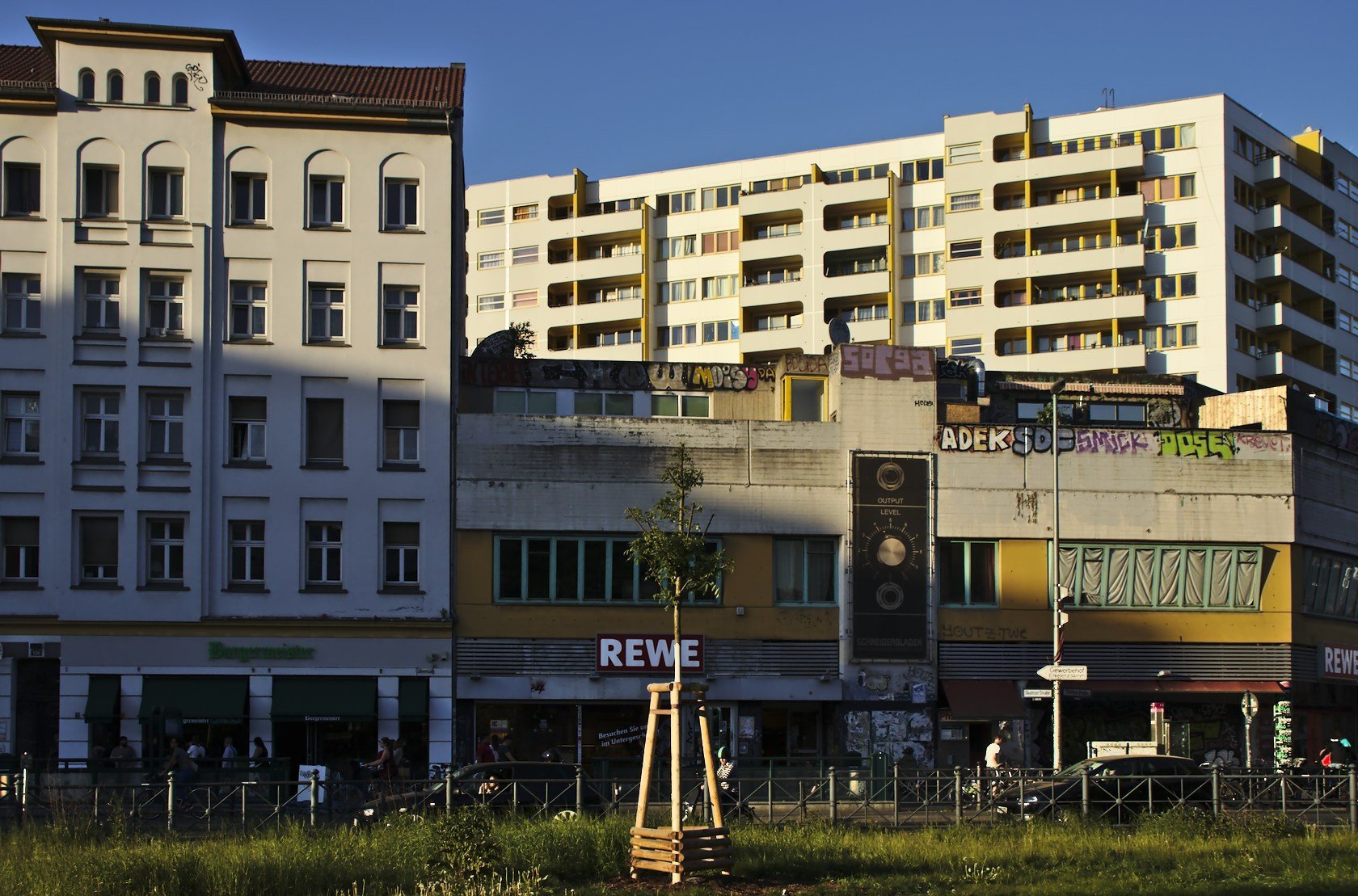 After the redevelopment of the area.
After the redevelopment of the area.
Into the architecture of the Kotti the diverging interests of its inhabitants, the administration and investors, their conflicts, struggles and collaborations during the last decades are deeply engraved.
It is a history of resistance, displacement, of subsidized housing programs, of separations, prejudices and stigmata, of decisions made from above; of many good ideas, initiatives, protests, crimes, laughters and cries and stoic serenity.
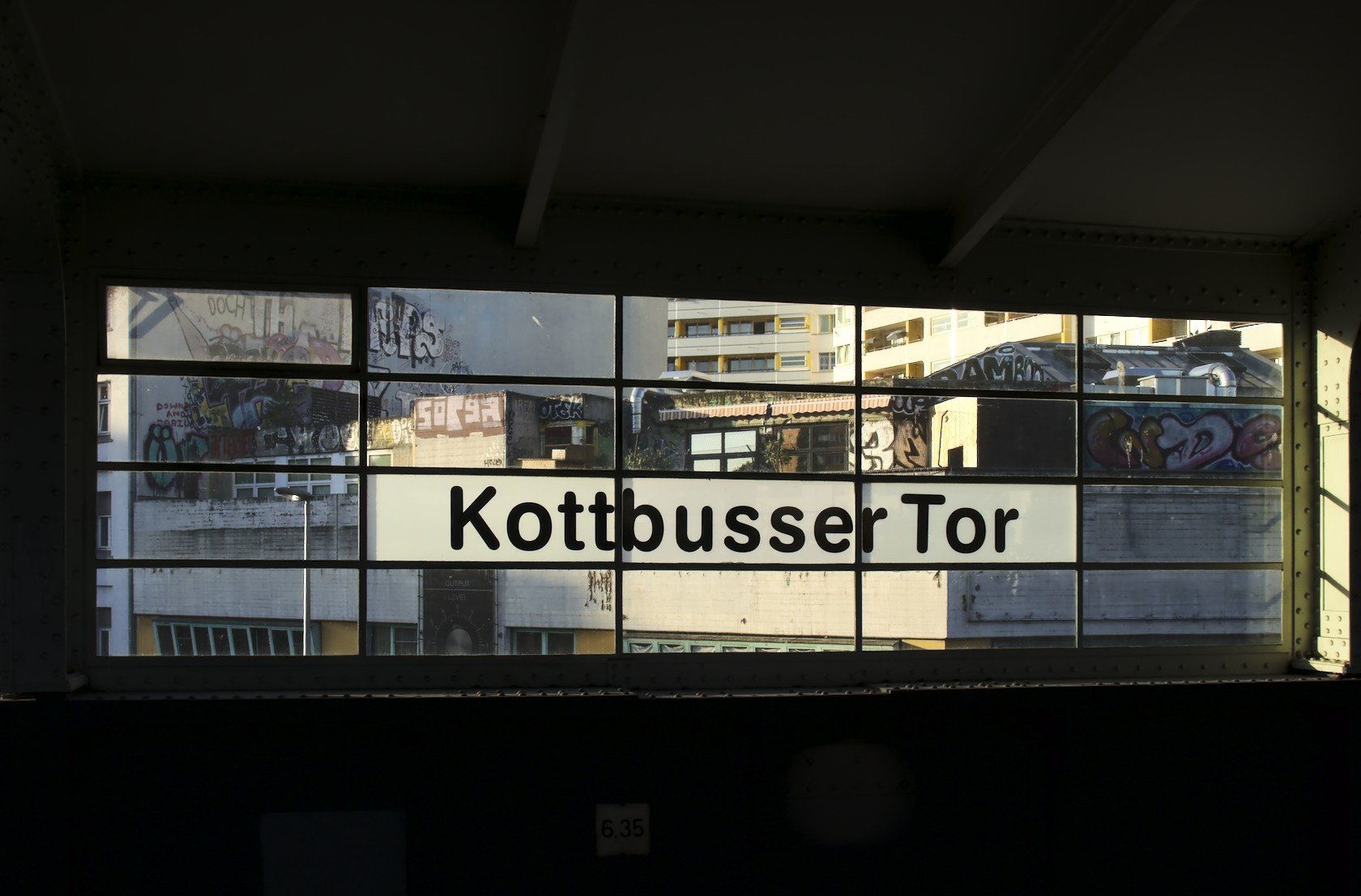 U-Bahn station
U-Bahn station
It is a long story, too long to write down it here, and I do not know all of it.
In the early 60s of the 20th century the Kotti was declared as a redevelopment area. This status was kept for nearly four decades. Old houses were not renovated but torn down. If the tenants did not leave voluntarily, they were thrown out by force. One model for this new wholesale demolishing of a neighborhood with nearly 40.000 inhabitants were the Robert Taylor Homes in Chicago.
The "investors" at that time were communal hosing associations, working for high prizes. One of the showpieces of the administrative dreams of a new era was the NKZ - the Neues Kreuzberger Zentrum, an apartment block with almost 300 apartments for the socially deprived. It was built 1969-73.
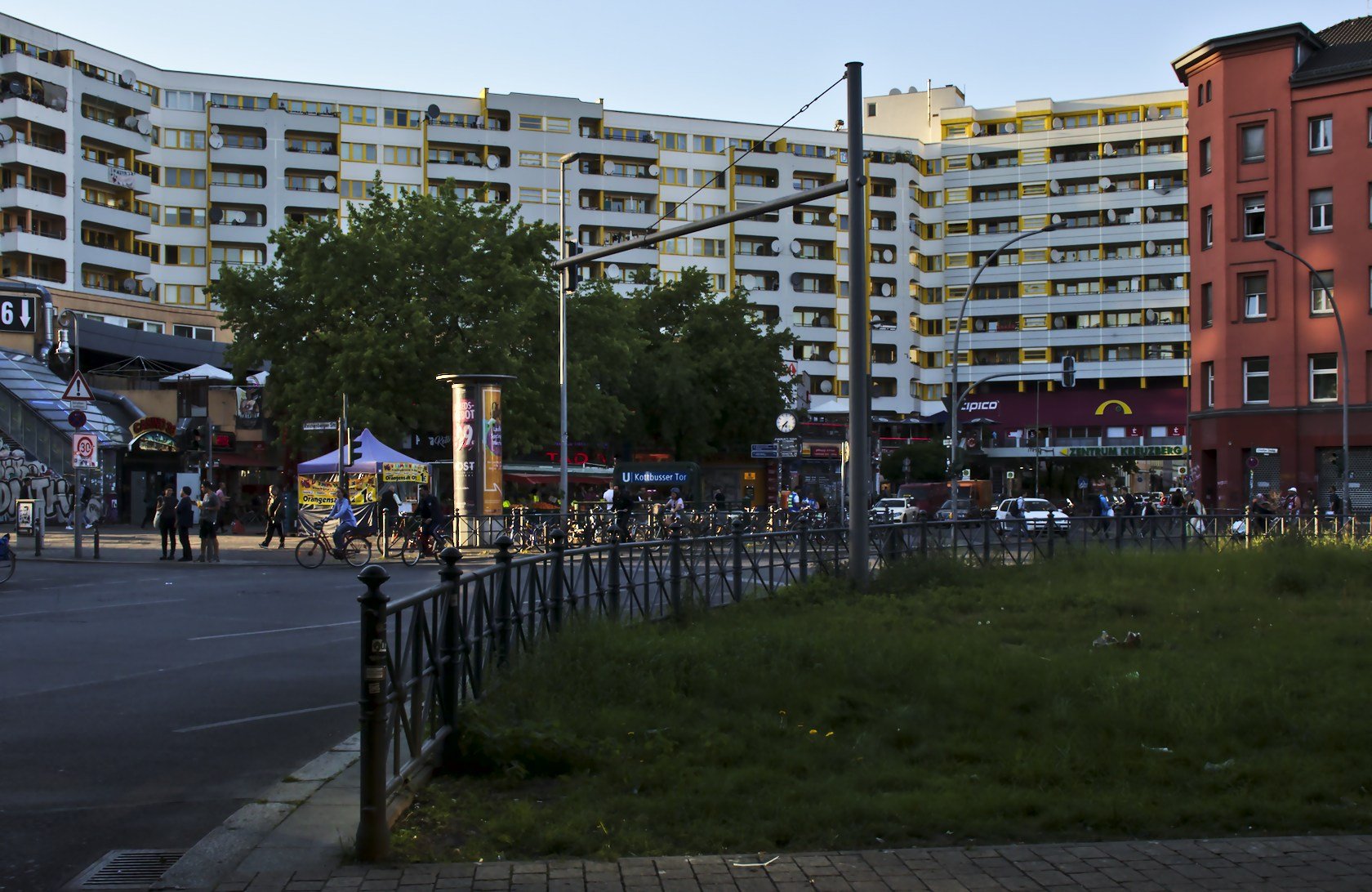 For a new beginning, the NKZ was renamed to "Zentrum Kreuzberg" later on.
For a new beginning, the NKZ was renamed to "Zentrum Kreuzberg" later on.
Instead of acting as a role model, the NKZ turned into a slum within a few years. In the surroundings more and more old buildings were torn down, accompanied with protests. The NKZ was deep in debts and anyone who was behind with rent for just a month was kicked out immediately; but still, more "modern" housing complexes were build. These politics continued even when it turned out that redevelopment plans would turn out as a total failure. But there were many interests, for the investors not at least the benefits from tax concessions and capital investment bonuses.
People resisted and squatted old houses to save them from further demolishing. Slowly a turning point was reached. The new politics were gentle redevelopment.
But still, most of the people living in the neighborhood were poor. By the turn of the millennium the Kotti ranged last of all squares of the city. People living there worked hard to make it a decent place for their families. There are a lot of small shops, bars and restaurants. But for some, mainly the conservative media, it is also still perceived as a "no-go area", a dangerous crime area where the streets are controlled by drug dealers and pickpockets.
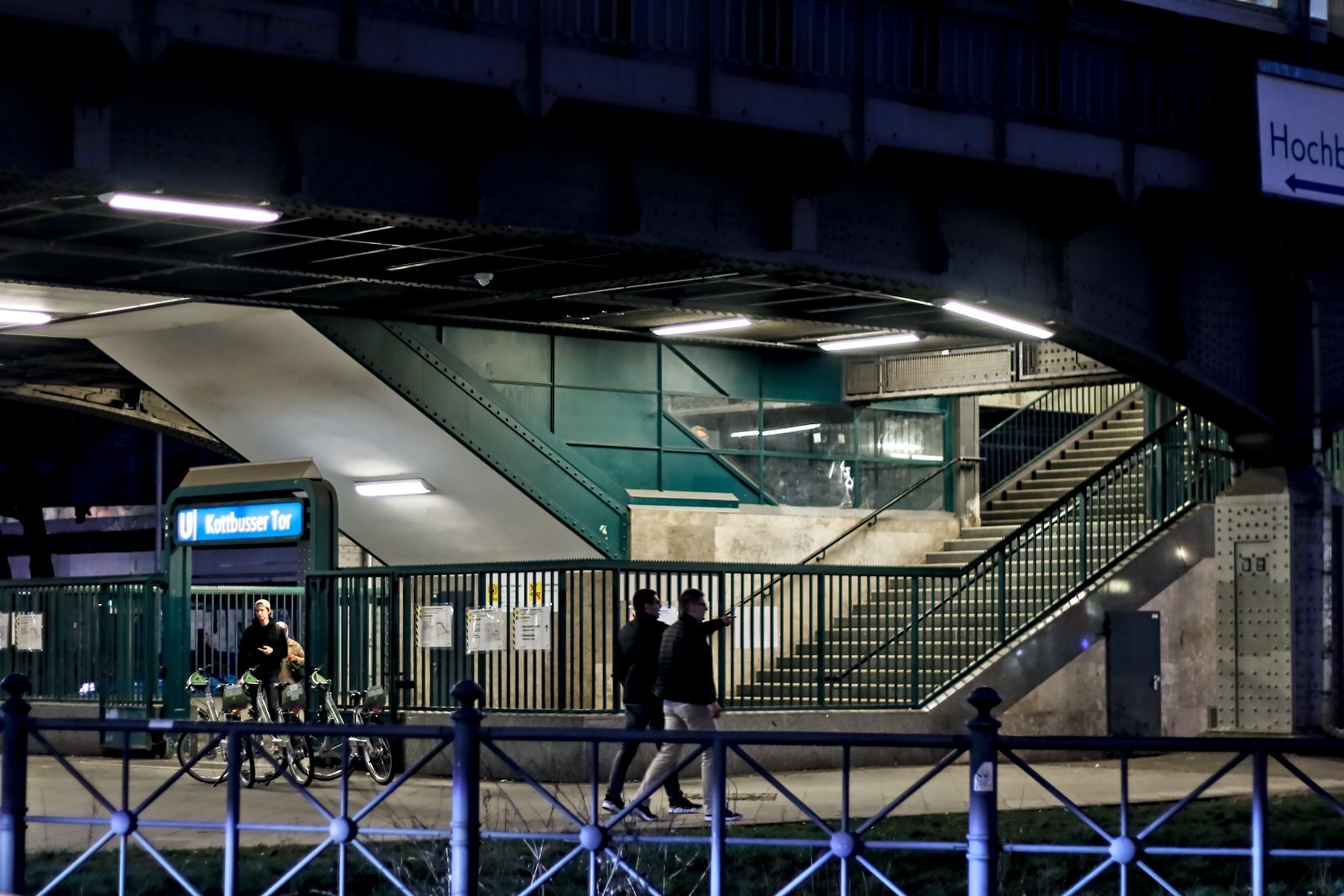 U-Bahn station
U-Bahn station
But the people living there are just normal people, and they are squeezed between a negative media image as a problem area, between never ending demands for higher rents by the landlords, between privatization and new investors, and an ignorant administration - and they might think they are all just the same.
The Kotti is also deeply linked to a migrant history. Many people live here whose families came decades ago from Turkey. But also lefties, retirees, young, old, students, artists, people from other countries, people with all kinds of identities and stories live there.
For the last years also more and more tourists came. There is a backpacker hostel now. The hip and trendy magazines tell you where to go out, which bars to spent your money and things to do around the Kotti. It is the lively diversity which fascinates travelers.
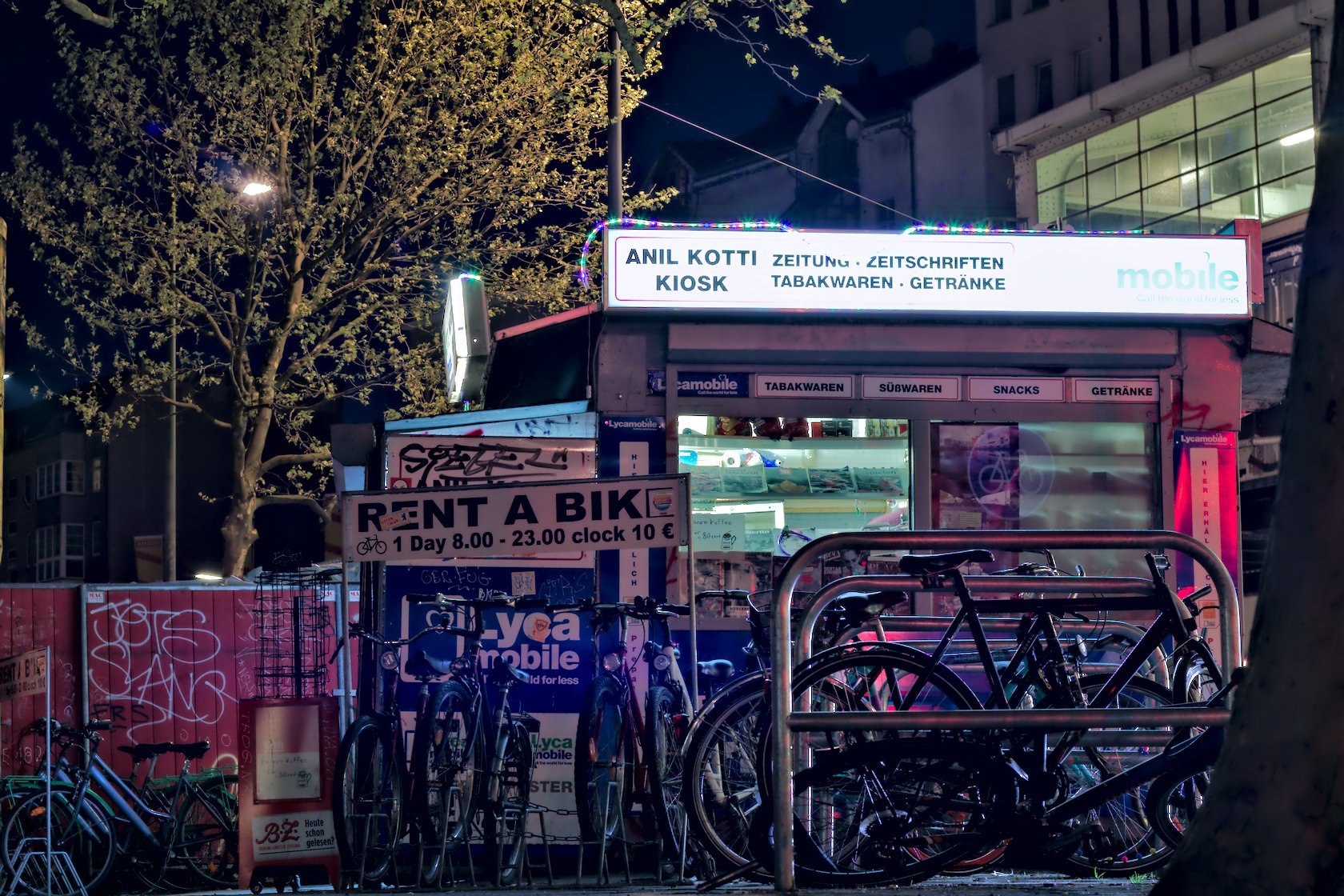
The NKZ was bought last year by another communal housing association, to prevent further displacement. Today these buildings are seen as an "architectural sin". For the people living there they are just their homes.
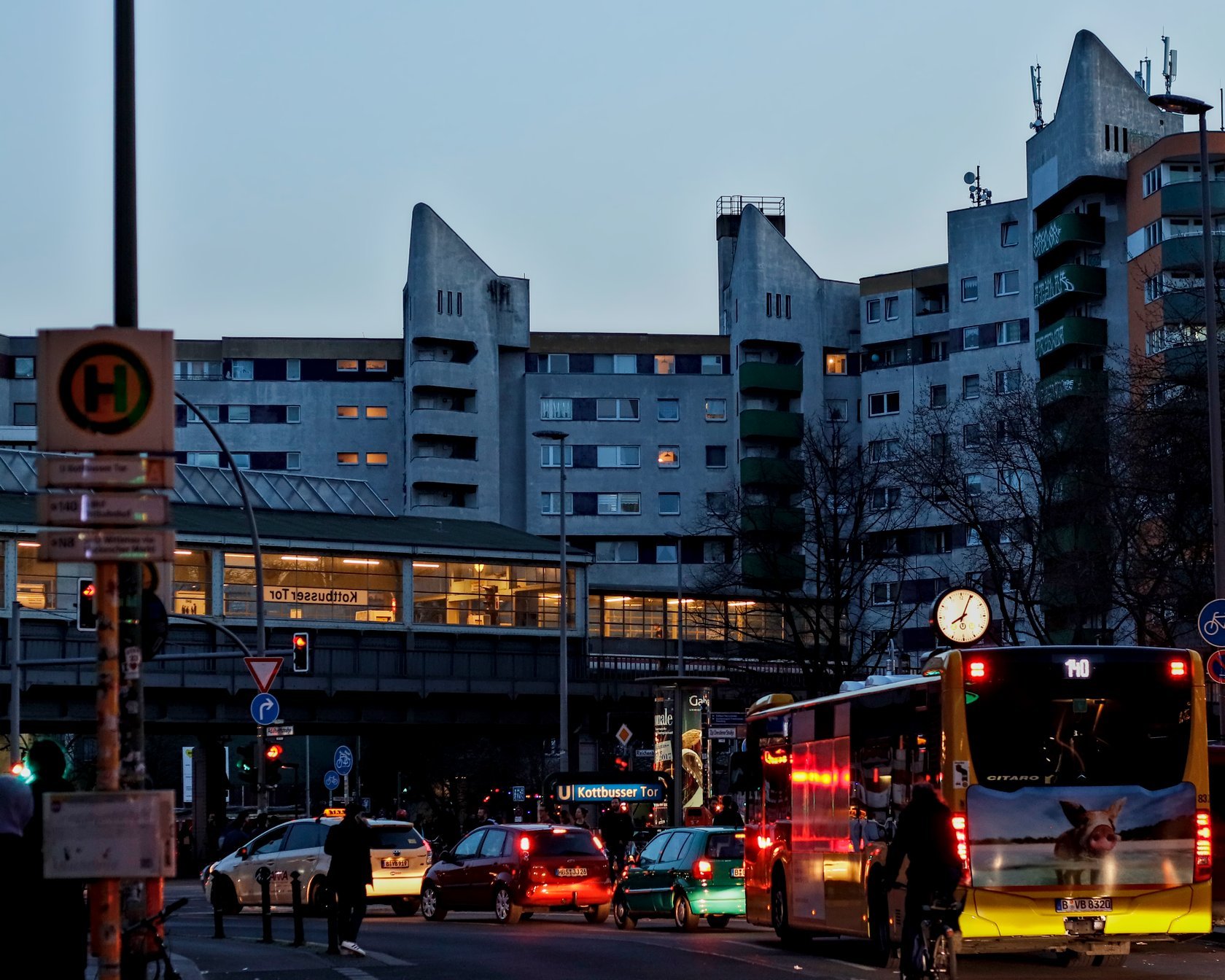
The next post of the kotti series is here.
The first post of the kotti series is here.

This is also my entry to the #archisteem project by @kimzwarch, you can read more about it here, and an update here.


